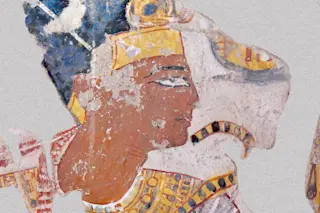Ancient Egyptian painters produced some of the most recognizable art of ancient times. Yet, even for their exactitude and memorable iconography, they sometimes made an oops and had to paint a do-over, according to a new study that scanned ancient paintings using X-ray imaging.
The paper by researchers from France, Belgium, Egypt and the U.S. aimed a macro X-ray fluorescence imaging (XRF) machine at two paintings to analyze revisions made to them and what they mean.
Read More: The Mummification Process: How Ancient Egyptians Preserved Bodies for the Afterlife
For red paintings, ancient Egyptians had used hematite, an iron compound, along with realgar, an arsenic mineral. For blue, they applied a much-relied-upon calcium compound later labeled Egyptian blue. And for white, they painted with gypsum, calcite and anhydrite.
No one knows exactly how the Egyptians produced their paintings, but researchers assume they started by drawing a preliminary sketch on a ...














